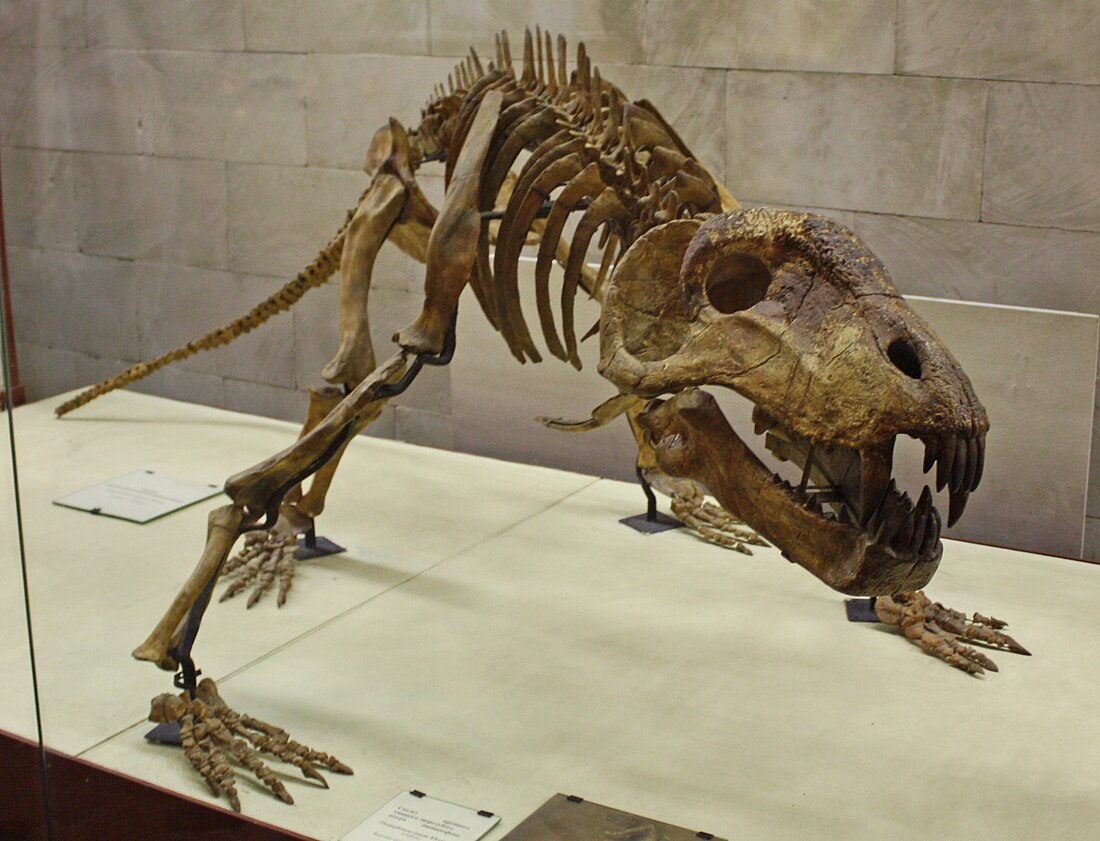Top Qs
Timeline
Chat
Perspective
Anteosaurinae
Extinct subfamily of therapsids From Wikipedia, the free encyclopedia
Remove ads
Anteosaurinae is an extinct subfamily of dinocephalian therapsids. It is one of two subfamilies in the family Anteosauridae, the other being Syodontinae.[1]
Remove ads
Description

These are very specialized, very large anteosaurs. The postcanine teeth are further reduced. Deepening of the postorbital region of the skull (behind the eyes) produced a larger temporal opening, indicating more muscle mass. The boss on the angular (rear of the jaw) has become very prominent, again, another sign of powerful jaw muscles. These huge animals were formidable predators.
In the Anteosaurinae, pachyostosis is taken to extremes. The dorsal (upper) surface of the nasal, frontal, and postfrontals (around and between/above the eyes) is thickened and rugose in the same manner as the tapinocephalids. Nevertheless, these animals are too specialized and too late to have been the ancestors of the herbivorous tapinocephalids, so these characteristics evolved independently.
Boonstra notes that the hip joint and the femur of Anteosaurus are comparable with those of the crocodile and that these animals may have had a crawling habit. Because of the carnivorous dentition, he believes them to have been slinking predators.
Remove ads
Classification
Below is a cladogram showing syodontine relationships from a 2012 phylogenetic study of anteosaurians:[2]
Remove ads
References
External links
Wikiwand - on
Seamless Wikipedia browsing. On steroids.
Remove ads

